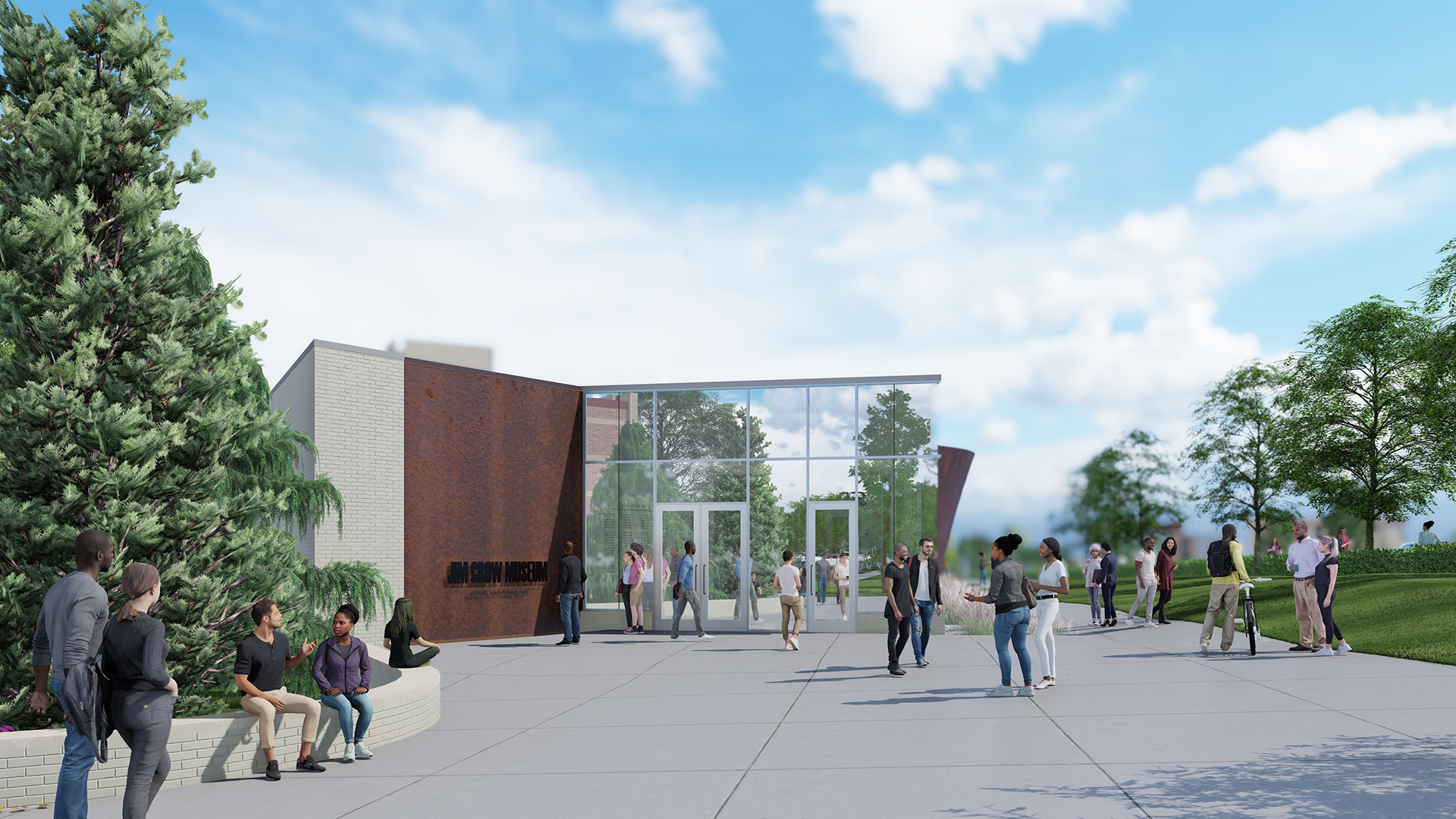Dec. 12, 2024
Ferris State breaks ground on new, expanded Jim Crow Museum, a one-of-its-kind resource to promote learning, healing, change

Ferris State University today broke ground on a new home for the Jim Crow Museum, a one-of-a-kind resource that leaders say will be a space for teaching, learning, and meaningful conversations about race that inspire understanding, healing, and positive change.
Ferris State has had a museum with a 30,000-piece collection of racist materials for nearly two decades, using the objects of intolerance to teach tolerance and promote social justice. However, the new standalone building located on the Big Rapids campus will allow the university to expand the discussion to focus on how people pushed back against racism and inspire future generations.
Ferris State President Bill Pink said the university is the perfect place for the museum, noting founders Woodbridge and Helen Ferris’ mission to provide an education to anyone in Michigan.
“At Ferris State, our institution has often been a national leader in laying pathways for innovation no matter the level of difficulty or the popularity. Our founders bravely opened their doors to all people at a time when that was not the expected or even accepted way to do things,” Pink said. “Now, 140 years later, we are still embracing that mission of equity. The new Jim Crow Museum will help us continue to educate those who come through its doors through a historic lens, and consequently, will attract students, visitors, scholars, and policymakers from across the country.”
The 26,000-square-foot facility will be located near the State Street entrance to the campus and will be equipped to handle the entire collection of artifacts and a state-of-the-art archive and research component.
The new museum, expected to open in fall 2026, will have as its centerpiece a 7,500-square-foot permanent exhibit dedicated to the large-scale display and interpretation of the museum’s most compelling assets.
David Pilgrim, Ferris State’s vice president for Diversity, Inclusion, and Strategic Initiatives, said the museum he founded already draws visitors from around the country and the world to its location in the Ferris Library for Information, Technology and Education.
Pilgrim said the new location will allow an expanded approach, guiding visitors to recognize past struggles while developing leaders to advocate for a future that moves us all forward together.
“While we once focused on the hateful objects themselves, using them as teaching tools, we now also emphasize the stories of people who resisted that hate—through achievements, activism, and lives of quiet dignity,” he said. “This shift brings a hopeful perspective, centering resilience and resistance. By highlighting humanity's enduring strength in overcoming hatred and injustice, the museum will continue to educate and inspire.”
Pilgrim said the space will serve as a resource for university scholars, and welcome school groups, faith communities, civic organizations, corporate leaders, policymakers, law enforcement, civil rights advocates, and many others.
Jim Crow was the name of the racial caste system, which operated primarily, but not exclusively, in southern and border states between 1877 and the mid-1960s. Under Jim Crow, African Americans were relegated to the status of second-class citizens. Jim Crow represented the legitimization of anti-Black racism.
The Jim Crow Museum’s initial mission was to use objects of intolerance to teach tolerance and promote social justice.
The existing Jim Crow Museum is recognized as one of the best-suited cultural institutions in the nation to provide context to the race-based struggles and circumstances of our modern era. The museum exposes the roots of deeply engrained biases that impact equity, the inclusion and amplification of diverse voices, educational attainment, and economic prosperity.
The new facility will substantially improve the organization’s capacity to collect, preserve, and cogently display artifacts of intolerance for educational use. It will also allow the museum to emphasize the stories of people who resisted injustice—through achievements, activism, and lives of quiet dignity. This shift brings a hopeful perspective, centering resilience and resistance. By highlighting humanity's enduring strength in overcoming hatred and injustice, the museum will continue to educate and inspire.
The $22 million project attracted financial support from the Ferris State board of trustees, State of Michigan, The Ferris Foundation, corporate donors and individuals with contributions ranging from $5 to $200,000.


